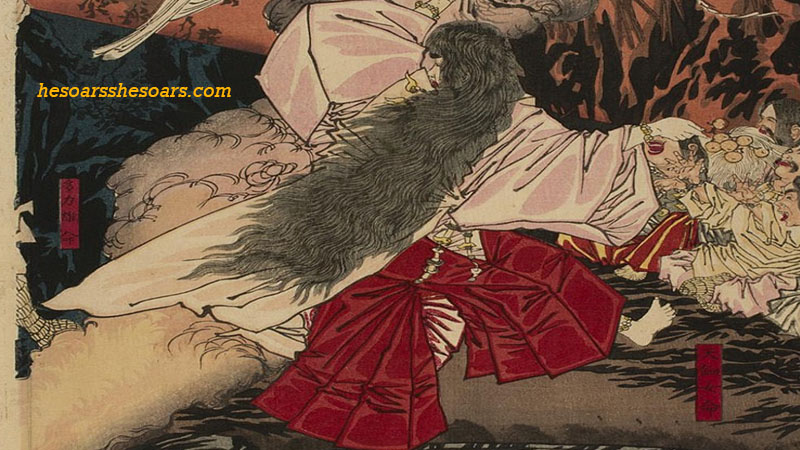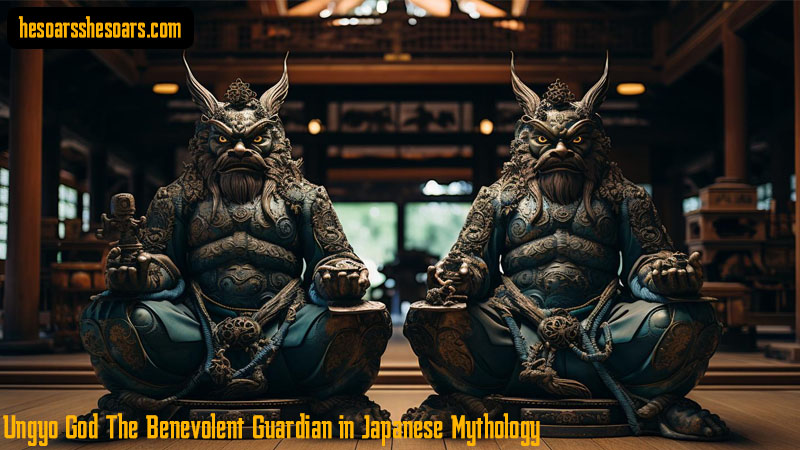Japanese mythology is a rich tapestry of deities, spirits, and legends that shape the cultural and spiritual identity of Japan. Among the pantheon of gods and goddesses, Ame-no-Uzume stands out as a vibrant and captivating figure. In this article, we will explore the life, characteristics, and cultural significance of Ame-no-Uzume in Japanese mythology.
The Origin of Ame-no-Uzume
Ame-no-Uzume, also known as Uzume, is a goddess from the Shinto tradition, which is the indigenous religion of Japan. She plays a central role in the myth of the sun goddess Amaterasu, one of the most important deities in Japanese mythology.
According to legend, Ame-no-Uzume was born when the primordial god Izanagi cleansed himself after his journey to the underworld. As he washed his left eye, Ame-no-Uzume was born from it, symbolizing her connection to illumination and revelation.
Ame-no-Uzume’s Role in the Amaterasu Myth
One of the most famous stories involving Ame-no-Uzume revolves around her role in coaxing Amaterasu, the sun goddess, out of hiding. According to the myth, Amaterasu had become angered and retreated to a cave, plunging the world into darkness. This created a crisis for the other gods and humans, as sunlight was vital for their well-being.
Ame-no-Uzume, known for her spirited and lively nature, devised a clever plan to lure Amaterasu out of the cave. She placed a mirror outside the cave’s entrance and performed a joyful and provocative dance. The commotion and laughter of the other gods watching the dance piqued Amaterasu’s curiosity. When she emerged from the cave to investigate, she saw her own radiant reflection in the mirror and was captivated by her own beauty. As a result, the world once again bathed in her warm and life-giving light.
This story highlights Ame-no-Uzume’s role as a goddess of revelry, mirth, and illumination. Her dance symbolizes the power of joy and celebration to dispel darkness and negativity.
Ame-no-Uzume in Shinto Rituals
Ame-no-Uzume is revered in Shinto rituals and festivals that celebrate the changing of the seasons, harvests, and other important events. Her presence is invoked to bring joy and to drive away negativity and hardship.
One such festival is the Aoi Matsuri, also known as the Kamo Festival, held annually in Kyoto. Ame-no-Uzume is celebrated during this festival to ensure a bountiful harvest and to promote well-being in the community. Participants dress in traditional costumes and reenact her legendary dance, paying homage to the goddess of mirth and renewal.
Cultural Significance
Ame-no-Uzume represents the Japanese cultural values of joy, celebration, and the power of laughter to dispel adversity. She is a reminder that even in the face of challenges, mirth and positivity can lead to resolution and renewal.
The story of Ame-no-Uzume also highlights the importance of mirrors in Shinto rituals and ceremonies. Mirrors are considered sacred objects and are often associated with the divine. In Shintoism, mirrors symbolize purity and the ability to reflect the true nature of the soul.
Conclusion Ame-no-Uzume
the radiant goddess of Japanese mythology, embodies the spirit of mirth, celebration, and illumination. Her role in coaxing Amaterasu out of hiding serves as a timeless lesson on the power of joy and positivity to dispel darkness and adversity. As a revered figure in Shinto rituals and festivals, Ame-no-Uzume continues to inspire and uplift the spirits of those who celebrate her, reminding them of the enduring cultural significance of her joyful presence.




